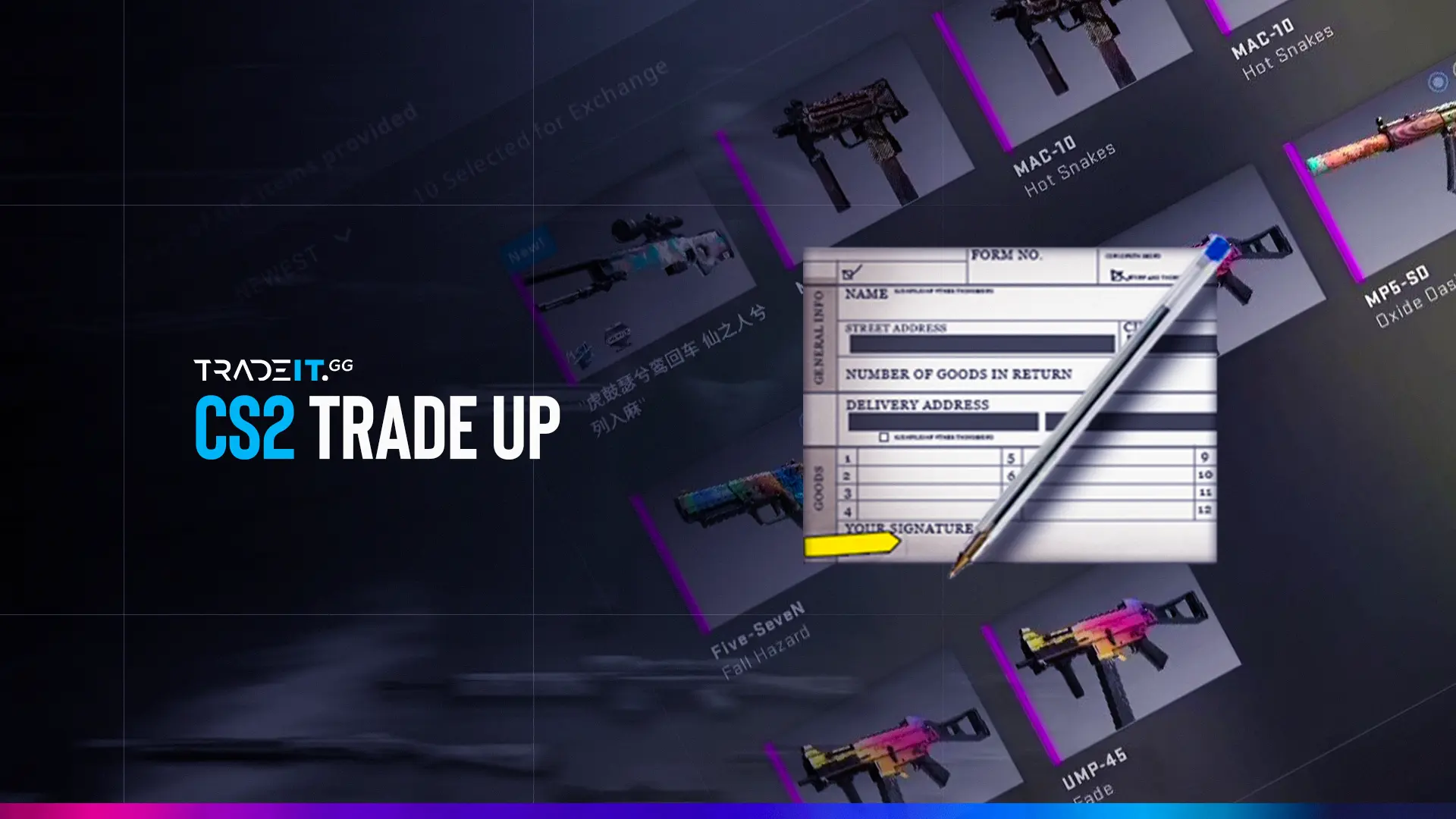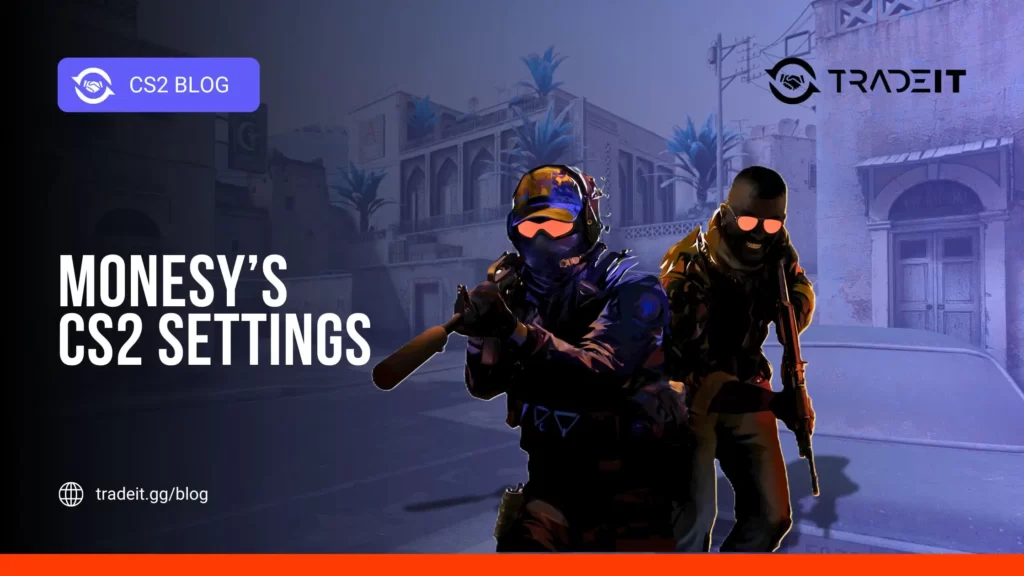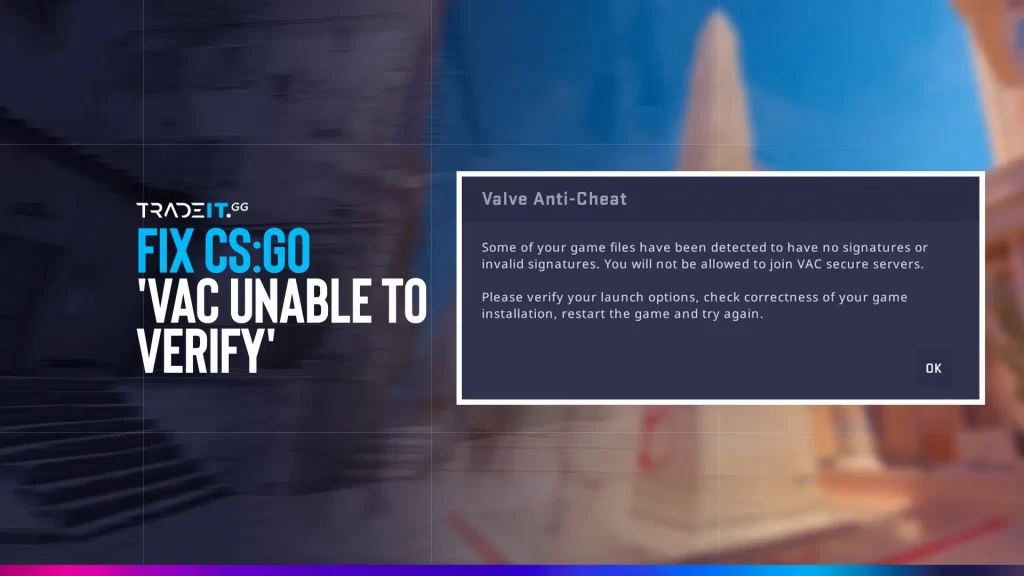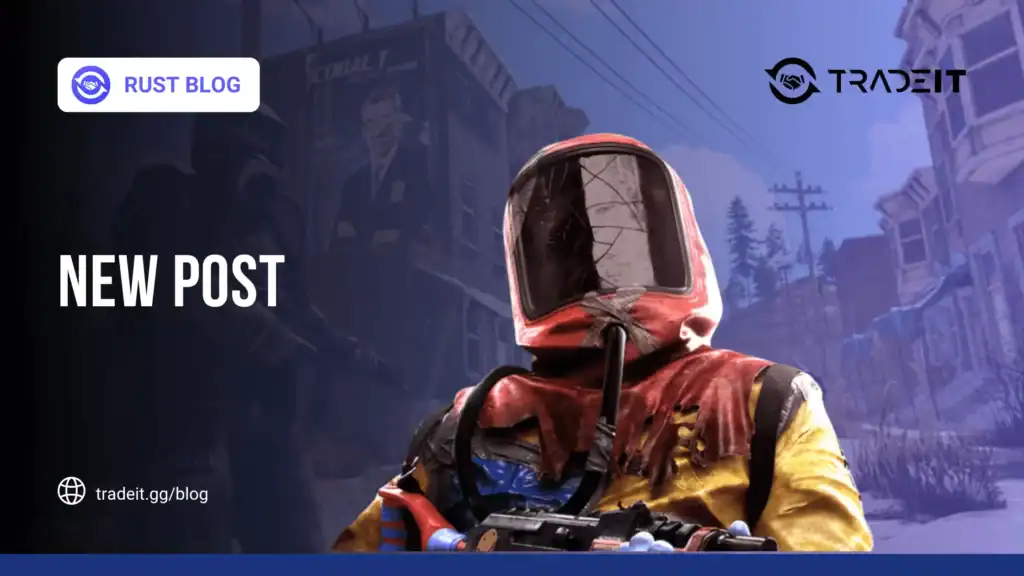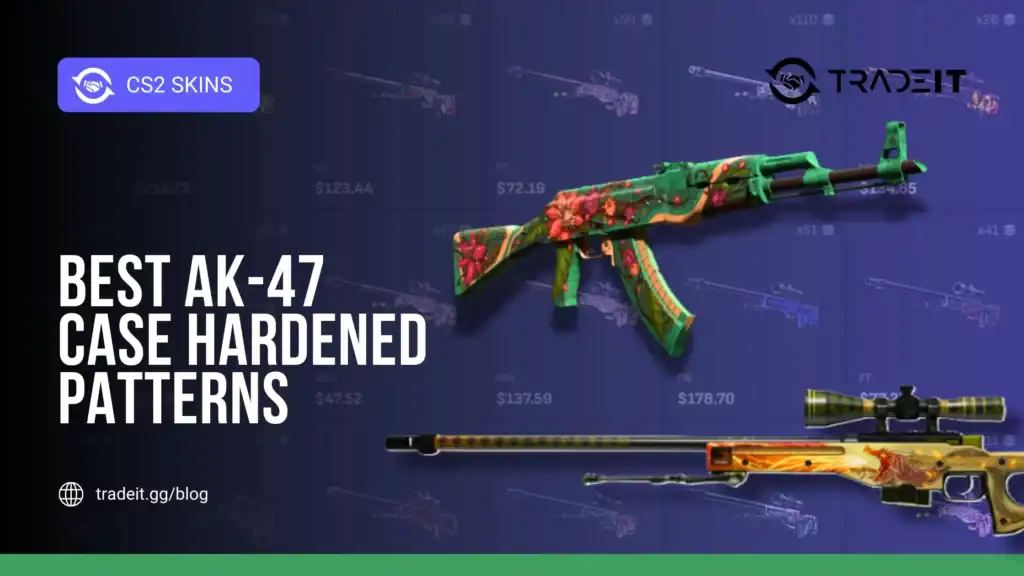Tired of seeing the same default skins in your inventory? In 2026, CS2 Trade Up Contracts are still one of the most exciting ways to transform low-tier skins into premium ones, sometimes even profitably.
Whether you’re chasing a USP-S | Printstream or experimenting with Knife Trade-Ups, this updated guide covers everything you need.
What are CS2 Trade Up Contracts?
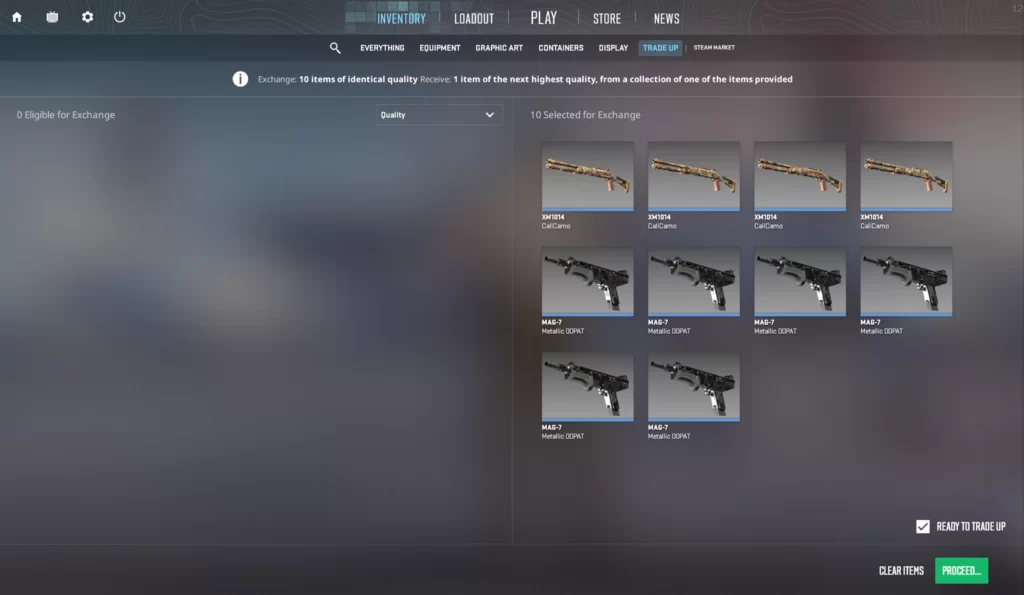
The CS2 Trade Up Contract is a feature that allows players to exchange ten weapon skins of the same quality for a higher-tier weapon skin.
While the outcome is not completely random and can be influenced by the choice of input skins, there are no guarantees of getting a skin worth more than the 10 skins used, as luck plays a significant part.
Many players often wonder how Trade Ups work and what the odds are of getting a desired outcome that allows you to upgrade your weapon skins.
The Origin of Trade Up Contracts
Trade Up Contracts were first added over a decade ago in the Arms Deal update, letting players combine 10 same-tier skins for a single higher-tier item.
The new skin is randomly chosen from one of the input collections, giving every contract a mix of risk and reward.
In short, Trade Ups allow you to turn lower-value skins into something rarer, but knowing the rules, float values, and market trends can make a huge difference in your results.
What You Need for a CS2 Trade Up
You’ll need 10 skins of the same rarity to create a Trade Up Contract. However, some items, such as contrabands, souvenirs, and Consumer Grade skins can’t be used. You also can’t mix StatTrak and non-StatTrak items in one contract.
The resulting skin is randomly drawn from one of the input collections. To increase your chances of getting something valuable, focus on low-float inputs and stay aware of current market prices and collection trends.
To ensure that you end up with a higher quality skin, optimizing float values and keeping an eye on market trends is crucial.
Top 10 Best CS2 Trade Up Contracts in 2026
| # | Input Skins (x10) | Output Skin | Est. Output Value (2025) | Float Target | Profit Chance | Risk Level |
|---|---|---|---|---|---|---|
| 1 | Recoil Mil-Spec | USP-S | Printstream | $50 – $120 | < 0.12 | ★★★☆☆ | Medium |
| 2 | Dreams & Nightmares Restricted | AWP | Duality | $20 – $40 | < 0.18 | ★★☆☆☆ | Low |
| 3 | Kilowatt Restricted | AK-47 | Inheritance | $250 – $400 | < 0.10 | ★★★★☆ | High |
| 4 | Revolution Mil-Spec | M4A4 | Temukau | $40 – $65 | < 0.14 | ★★★☆☆ | Medium |
| 5 | Snakebite Restricted | Five-SeveN | Fairy Tale | $35 – $75 | < 0.16 | ★★★☆☆ | Medium |
| 6 | Prisma 2 Classified | AWP | Containment Breach | $120 – $200 | < 0.07 | ★★★☆☆ | High |
| 7 | Fracture Covert (x5) | Butterfly Knife (Random) | $350 – $700 | < 0.10 | ★★☆☆☆ | Very High |
| 8 | Gamma 2 Mil-Spec | Desert Eagle | Mecha Industries | $20 – $40 | < 0.15 | ★★☆☆☆ | Low |
| 9 | Clutch Classified | AWP | Mortis | $45 – $70 | < 0.12 | ★★☆☆☆ | Medium |
| 10 | Snakebite Covert (x5) | Sport Gloves | Scarlet Shamagh | $250 – $650 | < 0.09 | ★★☆☆☆ | Very High |
How To Trade Up in CS2
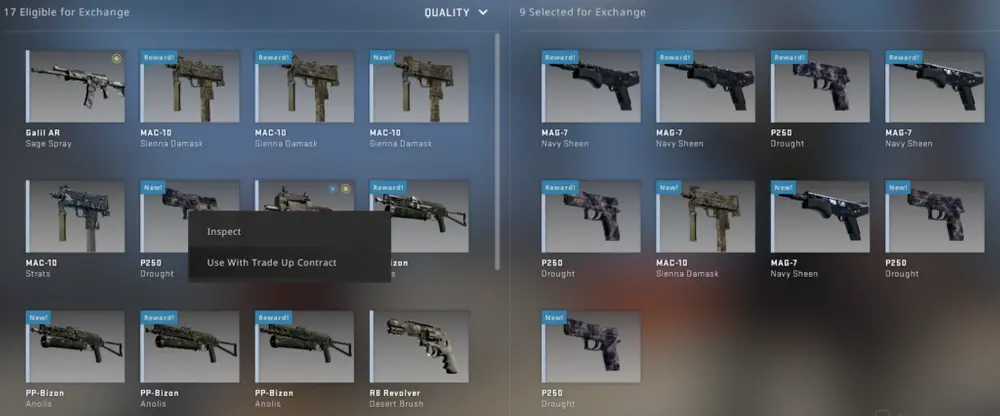
If you’re interested in using Trade Up Contracts in CS2, let me guide you through the process step-by-step.
- First, gather ten skins of the same tier from your inventory.
- Note that although combining weapons from different collections is allowed, they must be of the same tier to qualify for use as input.
- After selection, one skin will be randomly chosen and produced as output from the input collections.
- Once you have selected your ten preferred skins, a contract screen will pop up asking you to sign digitally using your mouse and confirm the trade-up.
- Once confirmed, a new skin of higher-tier from one of the collections that was put in as input will be sent to you.
The Latest CS2 Trade Up Feature – Knife & Gloves Crafting
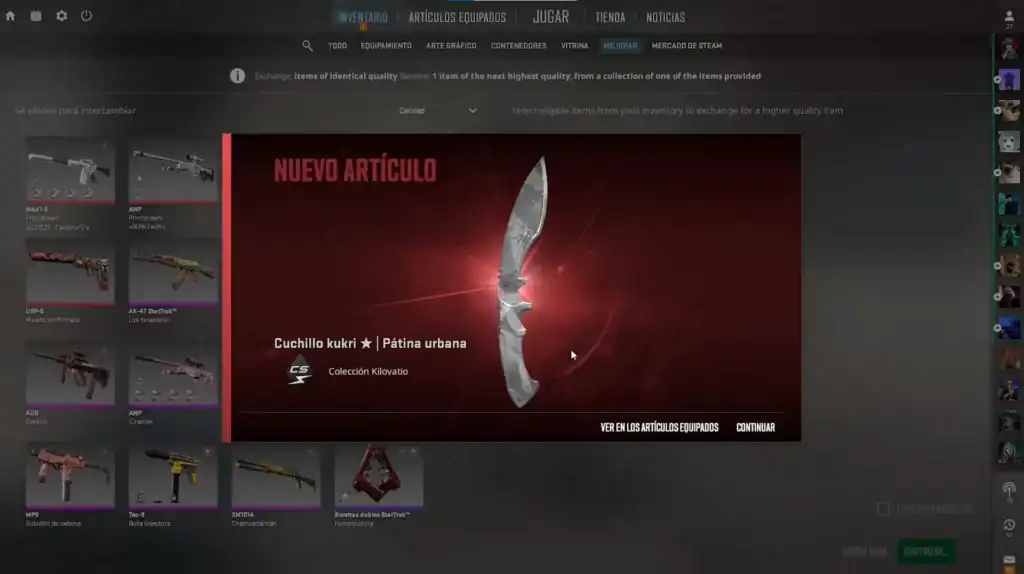
With the Re-Retakes Update (October 23, 2025), Valve expanded Trade Ups beyond standard skins.
Players can now trade five Covert (red) skins from the same collection to craft a knife or pair of gloves, including StatTrak variants if your inputs are StatTrak.
This new “Knife Trade Up” makes high-end cosmetics like the Butterfly Knife or Sport Gloves more accessible than ever. The output remains random within eligible items, and floats are preserved.
Strategies for Profitable Trade Up Contracts
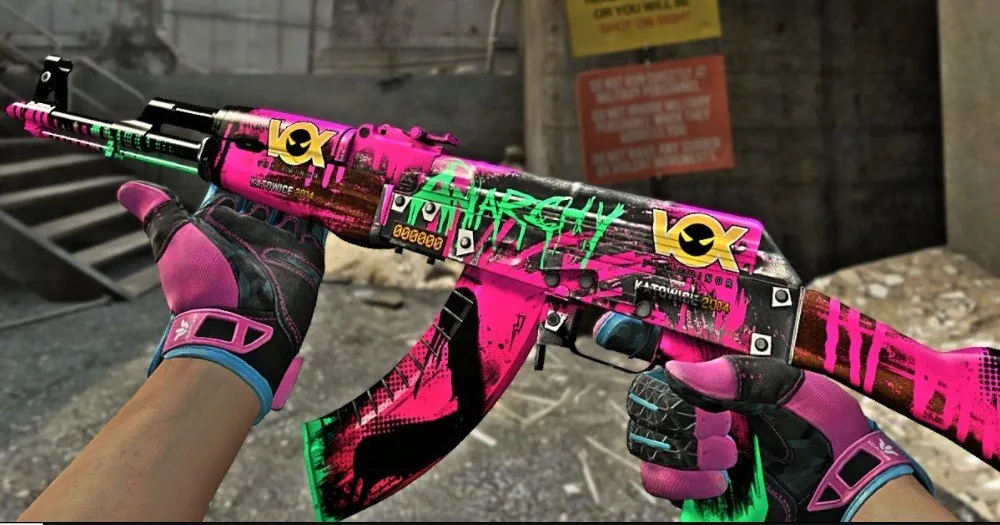
Watch price spikes after updates; that’s when Trade Ups can turn profitable fast, capitalizing on less expensive skins, and monitoring trends comprises the foundation of profitable Trade Ups.
It’s about knowing when to hold ‘em, when to fold ‘em, and when to walk away with a skin that others only dream of.
1. Analyzing Market Prices
Given the volatile nature of the Steam market, one needs to develop foresight to predict the fluctuation of skin prices.
By keeping a pulse on the CS2 skin market and understanding the rarity and value of skins, you can identify the opportune moments for Trade Ups.
2. Balancing Risk and Reward
Crafting a strategy that optimizes the value of input skins while tempering the risk is crucial.
Incorporating cheaper skins into the Trade Up can widen profit margins, but it also opens up the possibility of a less valuable outcome.
It’s about finding the sweet spot where risk meets reward, and fortune favors the bold.
3. Exploiting Market Trends
Capitalizing on market trends can yield lucrative results for those proficient in Trade Up contracts.
It’s about aligning your trades with the demand patterns and price spikes that ripple through the market.
How to Maximize Profit in Trade Ups
To consistently profit from Trade Ups in CS2, focus on these 3 aspects:
- Target Low Floats: Lower floats give higher output quality, directly affecting resale price.
- Mix Collections Wisely: Include collections with high-value outcomes (like Kilowatt or Revolution).
- Watch Steam Trends: Perform Trade Ups when prices spike after major updates or skin releases.
Skins You Can’t Use in Trade Ups
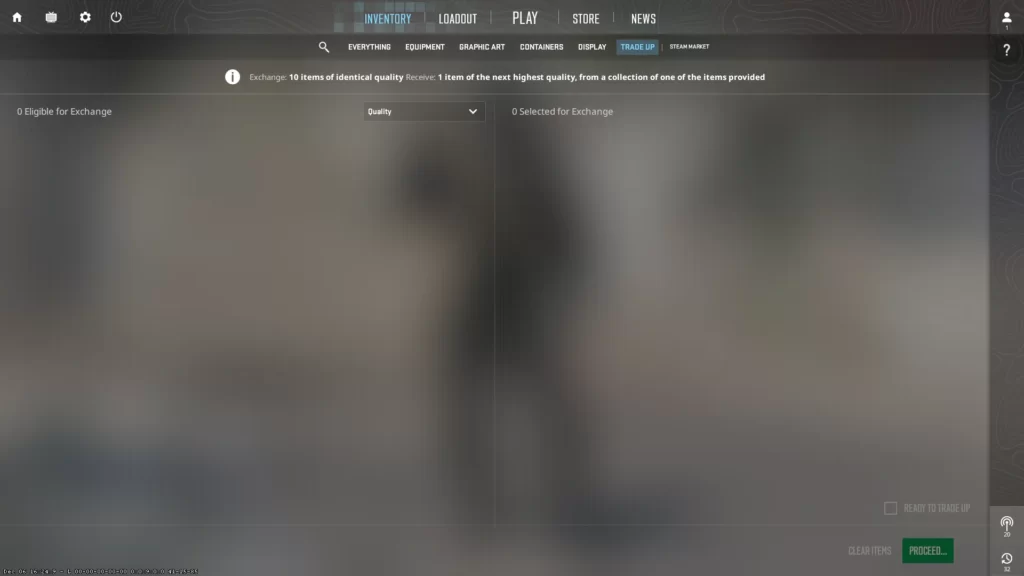
Not every skin works in a Trade Up. Consumer-grade items, knives, contrabands, souvenirs, and mixed StatTrak/non-StatTrak loads are off-limits.
1. Ineligible Skins and Collections
Some skins and collections cannot be used in Trade Up Contracts. For instance, Consumer Grade skins, contrabands, and souvenirs are not eligible for the process.
Additionally, certain collections such as The Bank Collection cannot be used to obtain high-end skins through Trade Ups (unless you have 10 P250 Franklin skins) due to their lack of upper-rarity items.
When we know which skins and collections can’t be traded up, it helps us choose our input skins wisely and avoid feeling let down later.
2. Float Values and Skin Conditions
Float values directly affect your Trade Up results. Lower floats mean cleaner, more valuable skins.
In this game, float values serve as numeric indicators of wear and tear on a weapon’s skin, with lower values indicating higher quality or less used skins.
To get the best results, always keep your average float below 0.10 for Factory New outputs. For instance, maintaining an average float value of 0.07 or below for the ten skins in question can result in a Factory New Skin and enhance its overall quality.
This is the formula for calculating the float in Trade Up contracts:
average float of skins in the contract * possible range of float of the resulting skin + minimum float of the resulting skin = trade up contract skin floatTo fully understand how float values work, read our guide.
Essential Tools to Boost Your Trade Up Success
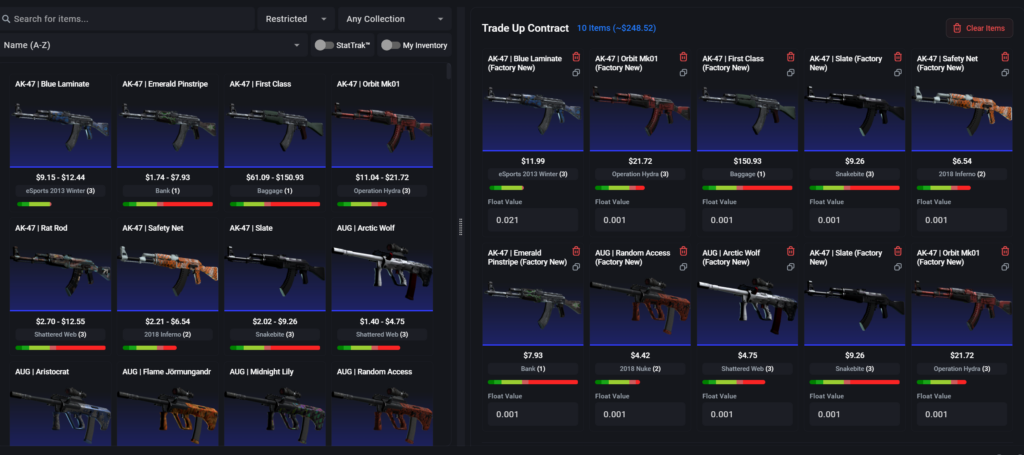
Tools that allow research into skin collections and provide an understanding of their market values serve as sextants that help chart your course.
They are the difference between a haphazard guess and an informed decision, offering the clarity needed to make your Trade Ups work.
1. Trade Up Calculators
Trade up calculators in the CS2 world act as crystal balls, providing a peek into your contracts’ potential outcomes. These digital soothsayers analyze float values and market data, providing insights that could be the difference between a common skin and a rare gem.
But with great power comes great responsibility. To avoid Steam’s rate limits, one must use these calculators wisely, refraining from excessive inventory refreshes. It’s about using these tools judiciously to augment your Trade Up prowess.
2. Browser Extensions and External Markets
Resources such as CS2 browser extensions like serve as your trusty aids. These tools sniff out the best deals, highlighting skins with the ideal float values and verifying trades in real-time.
The external markets are treasure troves, offering competitive pricing and a cornucopia of skins that might not be available on the Steam market.
How to Avoid Trade Up Scams
With the rise of third-party simulators, scams have increased. Avoid suspicious sites promising guaranteed profit. Always:
- Use secure trading platforms like Tradeit with escrow protection.
- Verify SSL (“https://”) and Steam API authenticity.
- Compare float and market values manually before signing.
Summary
In 2026, the CS2 Trade Up Contract system has evolved beyond simple skin upgrades, now offering high-end Knife and Glove crafting through the Re-Retakes update.
Whether you’re targeting profit or chasing your dream skin, planning and float optimization are key. Use trusted tools, track market spikes, and trade safely on Tradeit.gg to make your Trade Ups count.
Frequently Asked Questions
How do Trade Ups work in CS2?
Trade Ups let you exchange 10 skins of the same grade for 1 higher-grade skin. The output is chosen from one of the collections used.
Can you get knives from Trade Up Contracts in CS2?
Yes, you can. This option was introduced by Valve in their October, 2025 Re-Retakes Update.
What are the best CS2 Trade Ups in 2026?
Profitable examples include Recoil Mil-Spec → USP-S Printstream and Kilowatt Restricted → AK-47 Inheritance.
Do float values affect CS2 Trade Ups?
Yes. The average float of inputs decides the output’s float, making Factory New upgrades possible if your inputs are low float.
Are Trade Up Contracts in CS2 worth it?
They carry risk. You may profit if you plan correctly, but often it’s cheaper to buy the skin directly unless you enjoy the gamble.
What’s the safest CS2 Trade Up site in 2026?
Tradeit remains one of the safest and most transparent options, offering real-time float checks and trade verification.
How do I calculate my CS2 Trade Up odds?
Use a trusted Trade Up calculator like TradeUpSpy or CSFloat to simulate outcomes and avoid unprofitable combinations.
What’s the best time to do Trade Ups?
Right after major CS2 updates or case releases, new skins temporarily spike in price.


